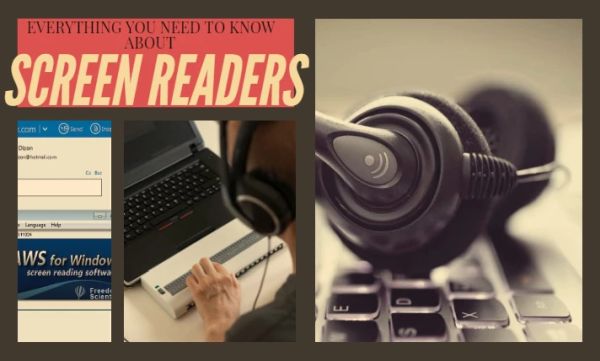Screen readers, like JAWS and NVDA, enable people who are blind or visually impaired to access digital content by converting text into speech and allowing navigation through keyboard shortcuts. These tools enhance digital accessibility, providing users with an alternative to visually engaging with websites, applications, and documents.

Screen Readers: Enhancing Digital Accessibility
Screen readers are essential assistive technologies that provide individuals with visual impairments the ability to access and interact with digital content. By focusing on utility, usability, and accessibility, screen readers like JAWS and NVDA offer transformative solutions that align with different models of disability. Below, I’ll explore two core features—text-to-speech functionality and keyboard navigation—and discuss how they relate to the Medical, Social, Economic, and Functional Solutions Models of disability.
Key Features of Screen Readers
- Text-to-Speech Functionality
- This feature translates on-screen text into synthesized speech, allowing users to listen to content in real-time. The Medical Model of Disability views this as addressing the individual’s impairment by providing a solution for blindness. It directly compensates for the user’s physical limitations, enabling them to access information they cannot see.
- Conversely, in the Social Model of Disability, the text-to-speech function is a way of removing societal barriers. The focus here is not on the impairment but on how digital environments were originally designed without considering visually impaired users. Screen readers, in this sense, adapt inaccessible systems to be usable for all.
- Keyboard Navigation
- Another critical feature is keyboard navigation, which allows users to browse the web, applications, and documents using only their keyboard. In the context of the Economic Model of Disability, this feature supports the employability of people with disabilities by ensuring that they can navigate digital workspaces and educational environments. With the ability to access web elements like links, headings, and forms, screen readers enable people to perform their jobs and participate in society economically.
- However, some digital environments are not fully optimized for screen reader compatibility, showcasing a failure in the Functional Solutions Model. While screen readers offer a practical solution, the digital ecosystem needs to be better adapted to fully support them.

Balancing Accessibility with Desirability and Viability
While screen readers excel in utility and accessibility, they face challenges in desirability and affordability. For example, JAWS is an advanced but costly solution, limiting its accessibility for users with lower incomes. This economic limitation can hinder access, reflecting the Economic Model, which underscores affordability as a critical barrier. Free alternatives like NVDA help bridge this gap, although they may lack some advanced features.
Desirability is also an issue, as the voices in screen readers often sound mechanical, detracting from the user experience. This is a reflection of the Social Model, where the pleasure or satisfaction of using assistive technology can impact how accessible the product feels to the user. Enhancing the voice quality and overall interaction can increase the desirability of these tools.

Conclusion
Screen readers like JAWS and NVDA play a vital role in making digital spaces more accessible. By addressing key aspects of disability models, such as the Medical, Social, Economic, and Functional Solutions Models, these technologies showcase how accessibility can be embedded into product design. However, as with all assistive technologies, challenges remain in ensuring affordability, compatibility, and desirability are fully addressed to create a seamless and inclusive experience for all users.